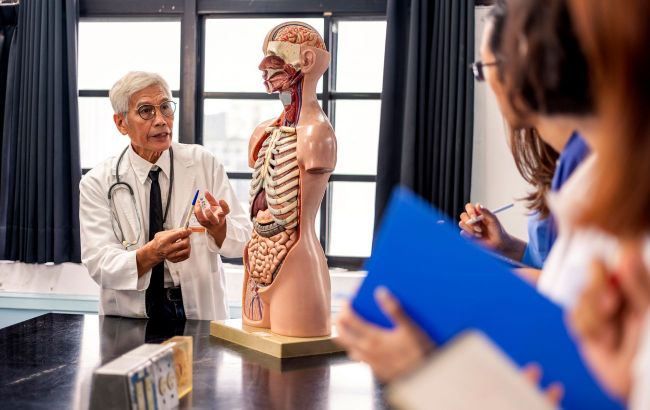Discovery of the century: Scientists accidentally find new organ in human body
 Scientists discovered a new organ in the human body (photo: Getty Images)
Scientists discovered a new organ in the human body (photo: Getty Images)
Scientists from the Netherlands announced the discovery of a new organ in the human body. This discovery may radically change the understanding of human anatomy and give an impetus to new methods of treating diseases, reports the journal Radiotherapy and Oncology.
Details of the study
A group of scientists, during prostate cancer research in 2020, conducted a series of computed tomography and PET scans on patients at the Netherlands Cancer Institute. The patients were injected with radioactive glucose, which causes tumors to glow in the images thanks to the PSMA protein (which is usually present in prostate cancer cells).
When patients received the injections, their salivary glands also glowed, which led to the discovery of a new gland that had never been seen before.
Then they studied the tissues of two human cadavers and found that the structures resembled salivary glands located under the tongue.
It was stated that the tubarial salivary gland is located behind the nasal passage, near the point where it connects with the throat. These glands are meant to "lubricate and moisten the area of the throat behind the nose and mouth."
After studying 100 patients, scientists confirmed that every person has the newly identified gland.
Why were the glands not noticed earlier?
Oncologist from the Netherlands Cancer Institute Wouter Vogel explained that the reason the glands remained unnoticed for so long is likely because "very sensitive imaging" is required to detect them, and they are "not easily accessible."
Humans have three pairs of major salivary glands, but not in that area. As far as we know, the only salivary or mucous glands in the nasopharynx are microscopically small, and up to 1000 of them are evenly distributed throughout the mucous membrane. So imagine our surprise when we found them, he said.
This is the first discovery of salivary glands in approximately 300 years, which makes it a very special finding.
The presence of previously unnoticed bilateral macroscopic salivary glands in the human nasopharynx was suspected after imaging with positron emission tomography/computed tomography using prostate-specific membrane antigen ligands (PSMA PET/CT).
After the gland was examined, the researchers used a histological study and 3D reconstruction to confirm the presence of "PSMA-expressing" glands in this area.
Thus, it was confirmed that the human body contains a pair of previously underestimated and clinically significant macroscopic salivary gland locations, for which the name tubarial glands has been proposed.
Earlier, we reported that scientists have identified a threat that claims the lives of thousands of infants every year.

